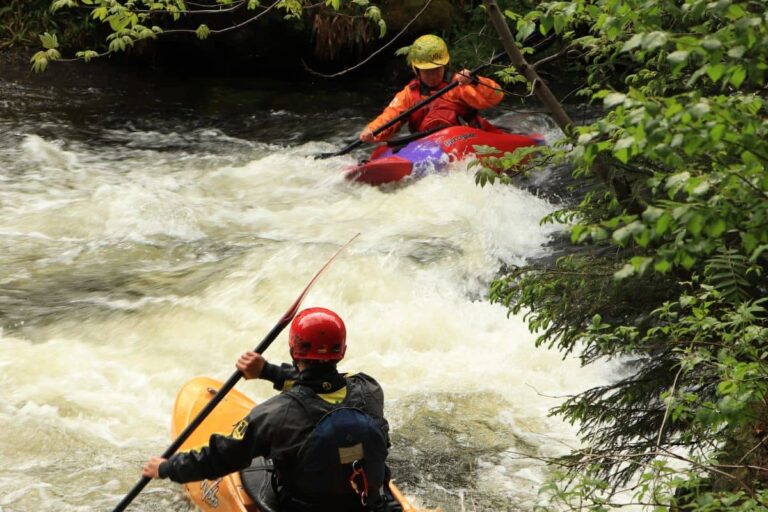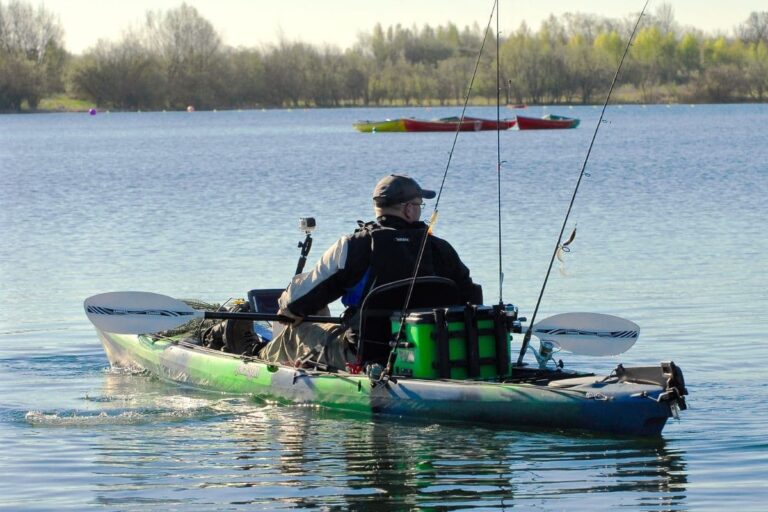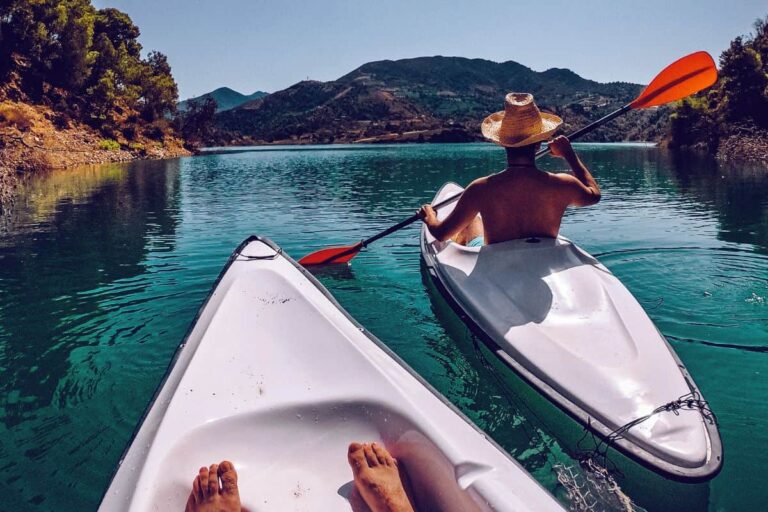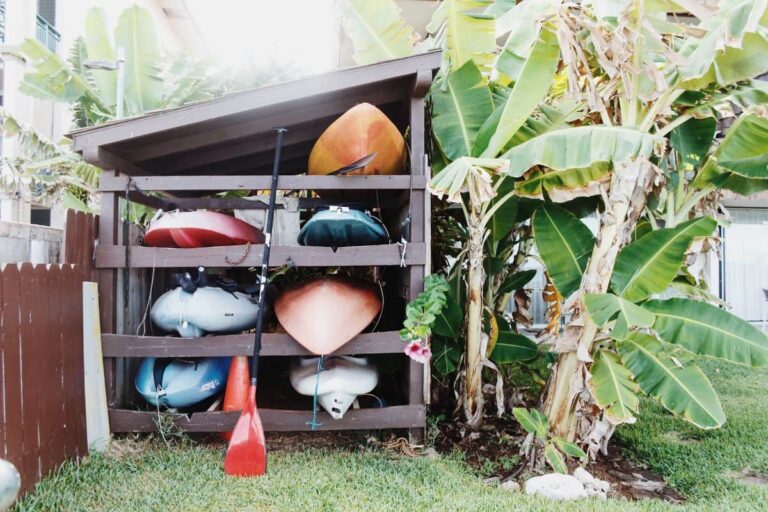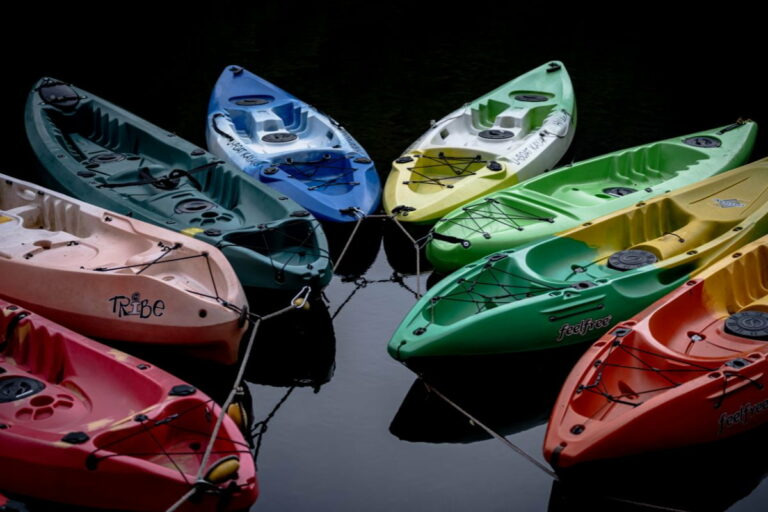Dos & Donts When Kayaking With A Baby Or Small Child
Kayaking with a small child or baby can be a fun way to spend the day with the whole family, but it’s essential to always take special precautions when kayaking with kids of any age.
Children must always wear a life jacket, and younger children and babies should be in the same boat as an adult who can paddle and supervise them. Be sure to factor in not just age, but also each child’s level of maturity and paddling ability when deciding if and how they will participate.
Babies must be in Coast Guard-approved infant PFDs to ensure that they stay safe out on the water.
Are There Age Restrictions For Kids To Be In A Kayak?
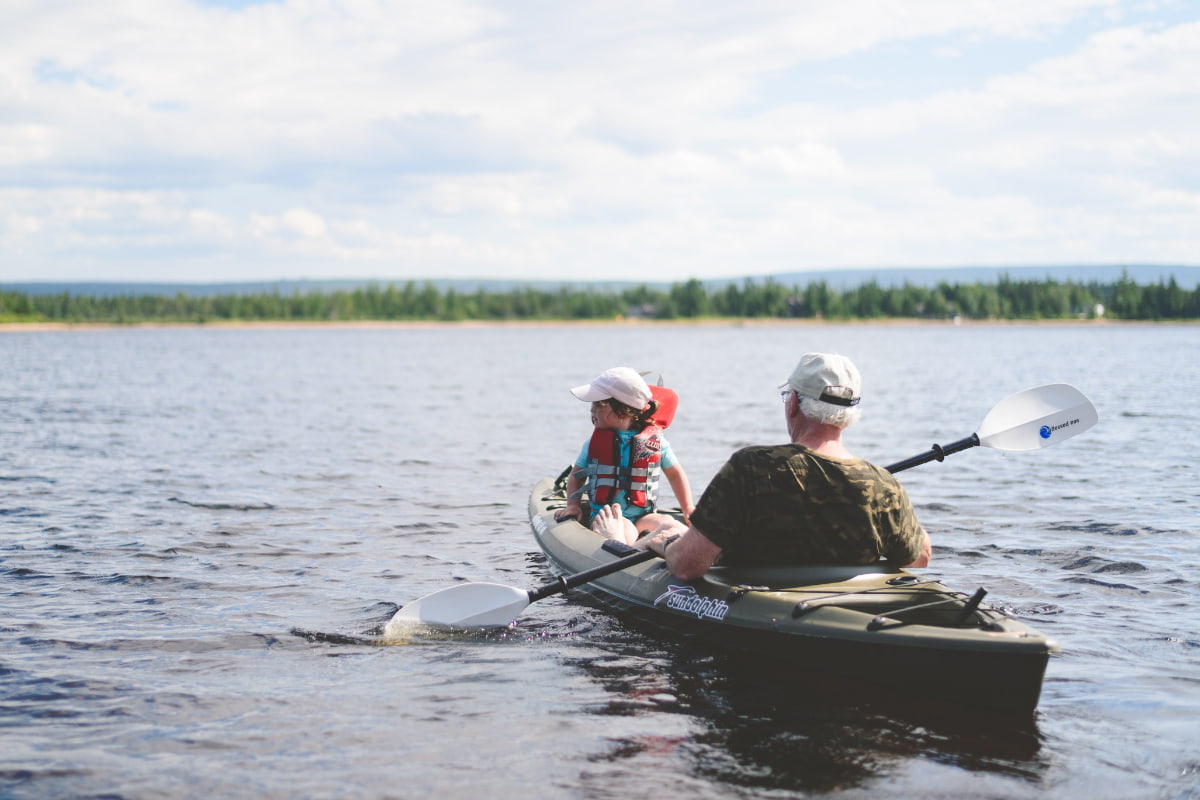
There isn’t any official minimum age regulation regarding how old a child must be to paddle in a boat, but most experienced parents don’t recommend kayaking with children under 12 months old.
Kids younger than one year cannot wear a life jacket comfortably, so it’s not a good idea to take them kayaking.
Generally speaking, you really shouldn’t bring children kayaking with you until they are at least two years old, but maturity and ability are more important than strictly age.
The US Coast Guard recommends that children who go kayaking should be able to sit still without moving around, be able to float by themselves, weigh at least 18 pounds, and wear a life vest comfortably.
If your child doesn’t meet the above recommended criteria, kayaking may be too dangerous until your little one gets a little older.
When Can Children Kayak By Themselves?
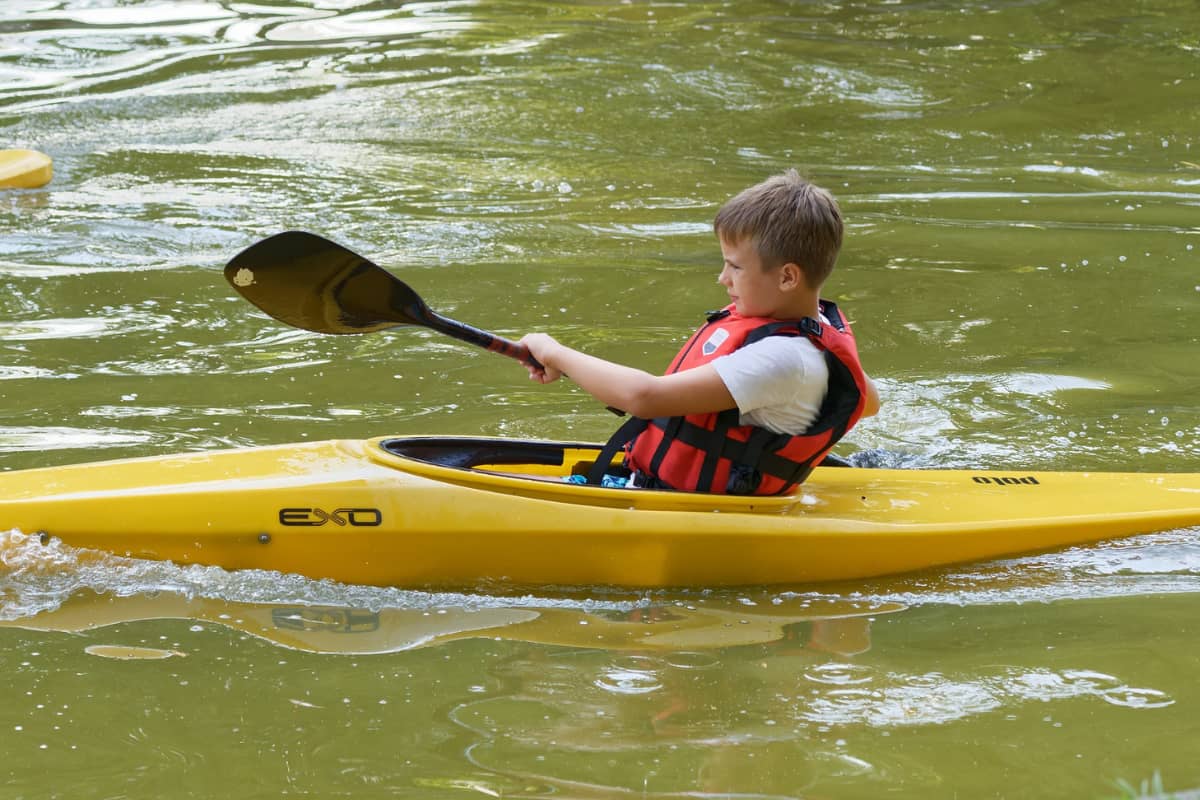
The Coast Guard recommends that children between the ages of two and five share a kayak with an adult.
If it’s a child’s first time out on the water, or he/she doesn’t have strong enough paddling skills, then children as old as eight to ten year should still share a boat with an adult.
A double kayak will allow an adult and child to sit together comfortably.
When kayaking with a baby, you may choose to hold the baby closer to you on your lap.
If the child is sitting in a separate seat, have him or her sit in front of you, or with another trusted adult for extra safety and monitoring.
Children between nine and thirteen years old are usually old enough to go in their own child’s kayak.
If a child is taller or heavier than other kids of similar age, he/she may use an adult kayak sooner.
Children under 13, or those with less experience should stay close enough that you can hear and see them at all times when they’re paddling solo.
Once kids are 14 or older, they are typically ready for an adult kayak.
Again, consider the child’s weight and height before deciding to upgrade to an adult kayak.
Children of this age are also usually ready for more independence.
Still, each child’s maturity and experience level is more important than age itself when deciding how much autonomy he or she can have on the water.
Planning A Kayak Trip With A Child
It’s a good idea to take children out on calm water for their first few kayak trips.
Lakes, bays, and slow-moving rivers are ideal bodies of water for children to get a feel for the water.
Some children are afraid of the motion of a boat when they first go out, and some may even get motion sick.
Also, choppy water or strong currents can be too overwhelming or scary, even for an experienced paddler.
Pay attention to your child’s stress levels when kayaking.
The first time you take a child out kayaking, it’s best to limit trips out on the water to no more than 30 minutes to an hour.
Young children, especially, can quickly experience mental fatigue.
Older children and more experienced paddlers can spend longer stretches of time on the water.
Adults paddling with children should have some prior kayaking experience so they’re prepared to assist children as needed.
Also, if you’re planning to take a kayaking trip with kids, it’s a good idea to consider kayaking lessons.
Swimming lessons are also a good idea to ensure children stay safe if they fall in the water.
You also need to be mindful of other kayak traffic wherever you paddle.
While children are first learning especially, opt for an area where your child can practice alone.
Be sure to recognize and praise good paddling!
Kayaking Safety
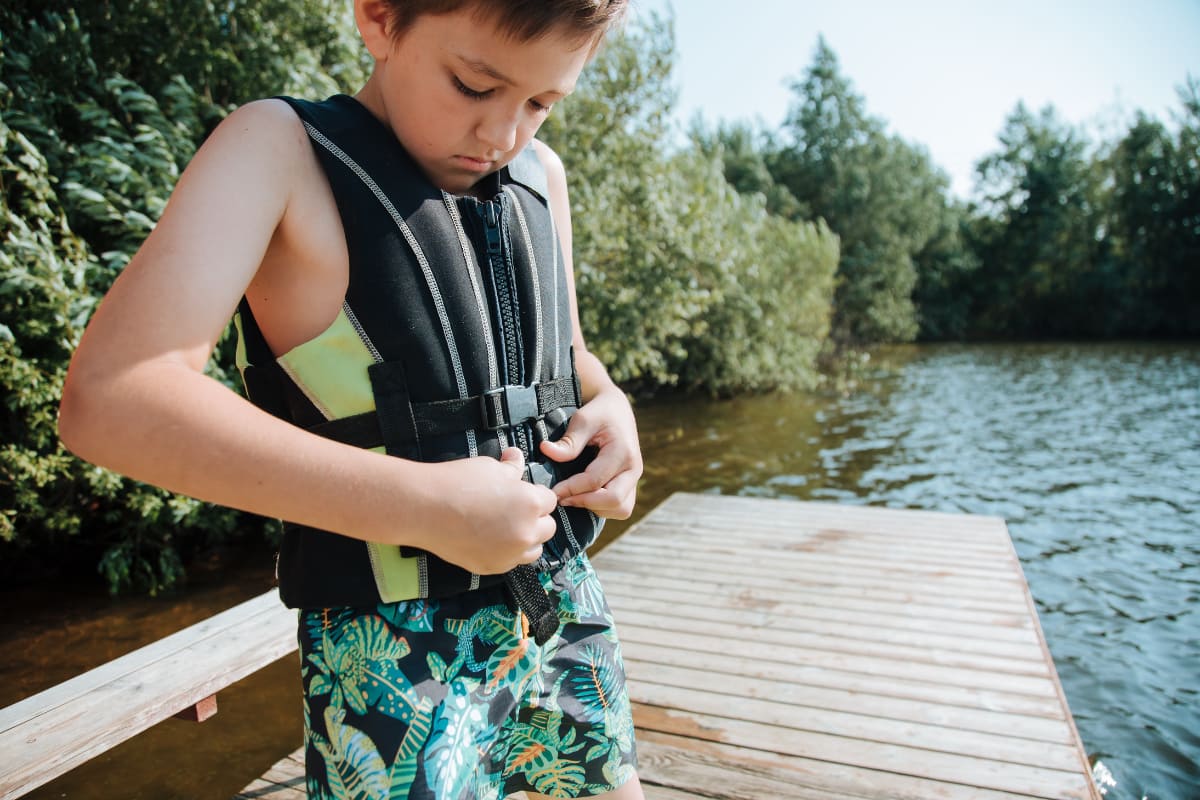
Wearing life jackets or any other personal flotation devices (PFDs) are essential safety measures for kayaking.
The Coast Guard requires that every person on a kayak has a life vest.
Children in particular should always have their life jackets on, especially if they’re not strong swimmers.
Children’s life vests come in three different sizes:
- 8–30 pounds (for infant PFDs)
- 30–50 pounds
- 50–90 pounds
It’s a good idea to buy a Coast Guard-approved vest to ensure your child’s safety in addition to getting top quality protection.
The life vest should fit snugly, and small children’s PFDs should also have a crotch strap if they weigh less than 50 pounds.
A baby’s vest should have a neck pad to help keep his or her head positioned correctly in case the kayak tips over.
It’s a good idea to have kids practice wearing life vests before they go on the kayak so that they can get used to the way they feel.
Before kayaking with kids, it’s also important to review the rules with them.
Explain to children that they cannot stand, reach over or lean over the side of the kayak, jump inside or on top of the kayak, or take off their life vests while you’re out on the water.
If a kid cannot stay seated, he or she should not be on a kayak.
Never tie children down to a boat to keep them seated.
Tethering a child to a boat, even on a tandem kayak with an adult, poses a severe drowning hazard.
Also, be mindful of sun exposure before going on any kayaking trip.
Children with light skin tones and sensitive skin are especially susceptible to burning, but all kids can get a sunburn, especially if their skin is wet.
Check the UV index before going on any paddling trips.
Also remember to bring sunscreen, sunglasses, and a sun hat to ensure children have sufficient sun protection.
All children who are out in direct sunlight for long periods of time should be protected.
Finally, ensure that there is enough adult supervision for the children.
Generally, there should be a ratio of one adult per child, but if the children are older or more experienced, then two adults may be able to handle up to four or five kids.
As long as adults watch children while paddling, they should be able to handle the responsibility.
Many parents allow older siblings or cousins to watch younger children while kayaking, even when they first start paddling.
However, just because someone is 18 or older does not mean he or she is necessarily mature or vigilant enough to protect a child.
Other Considerations For Kayaking With Children And Babies
There are other factors to consider when kayaking with children and babies, like whether to use a sit-on-top kayak or a sit-inside kayak.
You also need to consider the length of kayak paddles to make sure everyone can manage the appropriate size for their body.
Have Fun
Kayaking can be fun for the whole family, but sometimes younger kids can become rowdy or bored.
If you’re letting a child paddle a single kayak alone, stay at the same pace or let the slowest paddler lead.
When adults paddle slower than their normal pace in order to keep up with children helps make the kids feel more comfortable paddling, and ensures them that they’re doing a good job.
Also, going at a slower pace makes it less likely a child will lose balance and fall off.
Additionally, it’s a good idea not to paddle too far from land if you have a young child, especially on the first trip.
Young kids can get bored quickly – if your child starts to exhibit behavior difficulties or even becomes a danger to him/herself or others, you’ll be able to reach land faster.
Sit-On Kayak Or Enclosed Cockpit?
For young children, it’s best to use a sit-inside tandem kayak with an enclosed cockpit, because this is the most ideal option for keeping children from tumbling over the side.
Sit-ins also give kids more room to move around.
Most kayaks are of the sit-in variety since they are the more traditional model.
Once children are old enough to paddle their own boat, a sit-on-top kayak is a better option.
This is because sit-on-tops are easier to steer, and can be flipped over easily if they capsize due to their self-draining scupper holes.
Just keep in mind that a person in a sit-on-top kayak will get wetter than someone in a traditional kayak.
So, when deciding if you should buy a sit-on-top model, think about whether or not the child is comfortable getting wet- some children enjoy it or don’t mind it, while others hate it.
You may also consider buying inflatable kayaks for kids.
Inflatable boats are especially useful if you live in an apartment, or have multiple children and need several kayaks, since this type can be easily compressed for easier storage.
Extra Gear
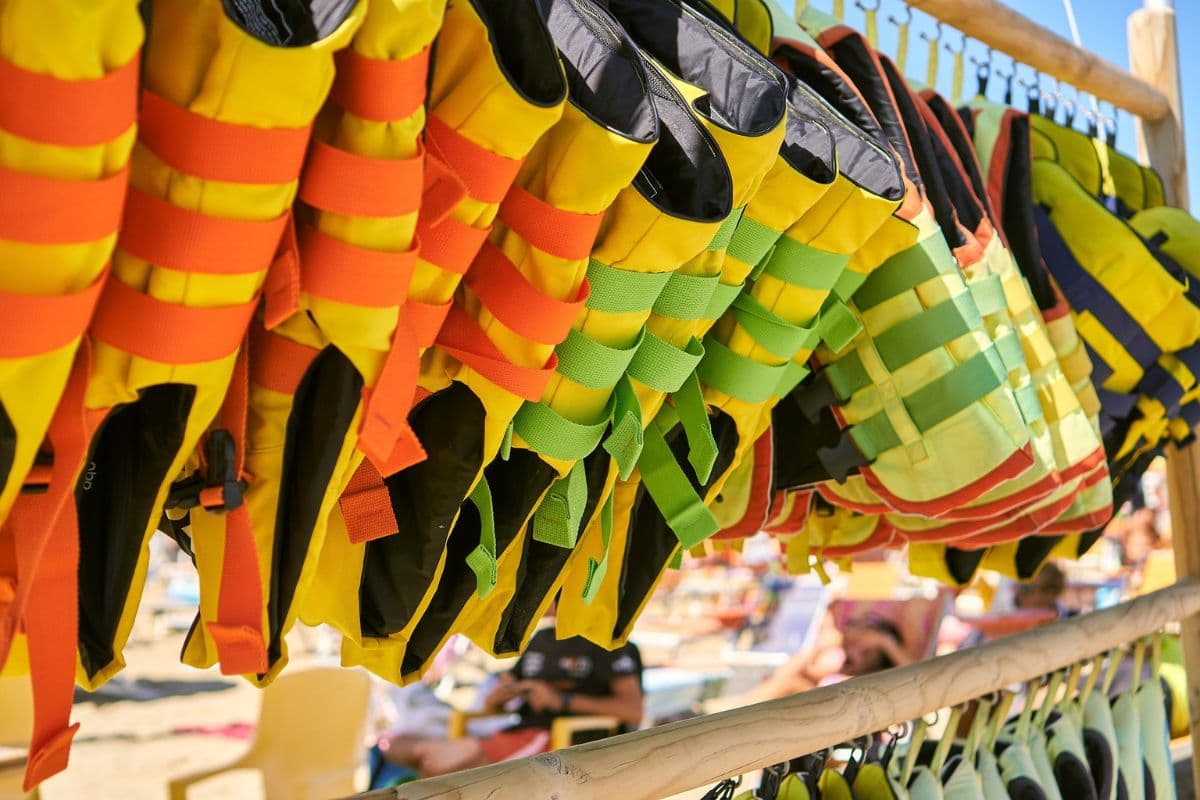
First of all, when kayaking with children especially, it’s always a good idea to bring extra clothes along.
If you have water-resistant garments for your child, those are ideal, but if you don’t, having an extra set of dry clothes will make your little one more comfortable.
Also, children should have a paddle that is the right size for them.
Typically, a kid should use a paddle that is about six and a half feet (200cm) long with a narrow shaft.
Finally, you should also consider bringing additional gear that may come in handy, such as separate maps of the area to keep children from getting lost, in case they somehow become separated from you.
Also, emergency whistles make it easier for children to signal to you that they need help.
And, most importantly, always remember to bring a life jacket for each child.
Conclusion
Overall, a good general rule for kayaking with a baby or small children is to factor in their ability and maturity levels.
Small children should be placed in tandem sit-inside kayaks for maximum safety.
Similarly, when children or babies join you for a kayaking trip, it’s recommended to stay in calm waters (at least at first), and they should always wear a life jacket when on the water.
Table of Contents

